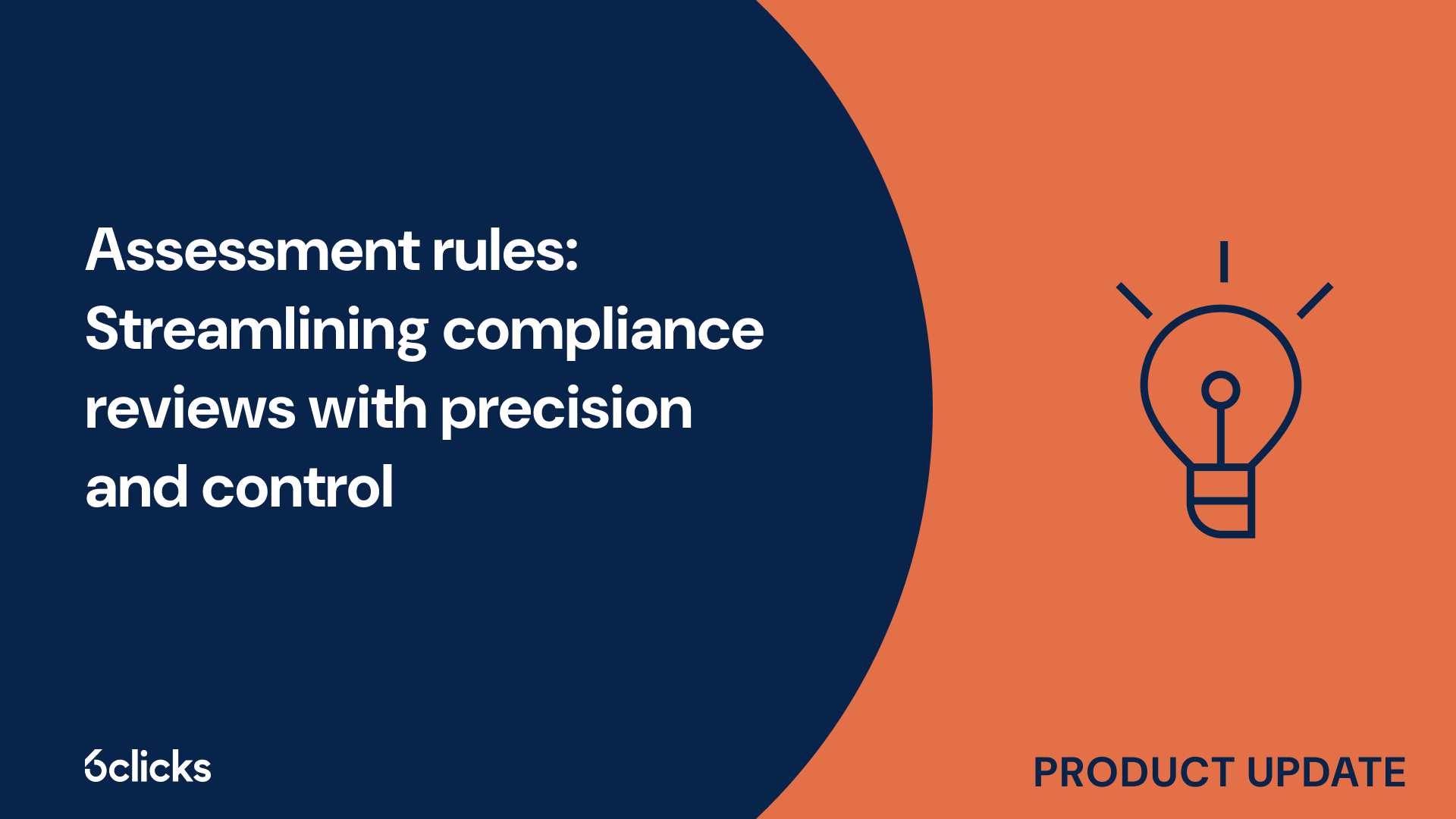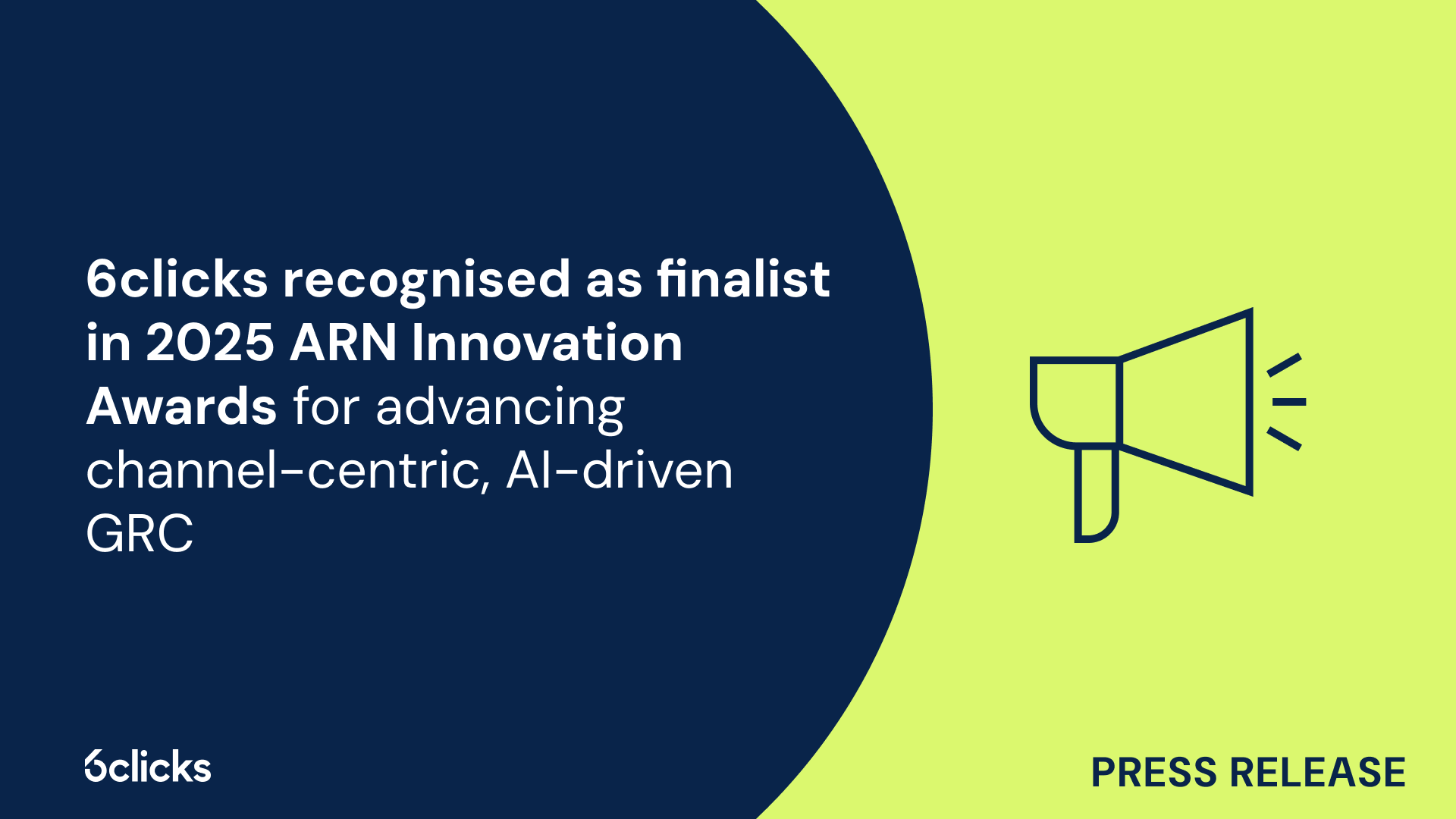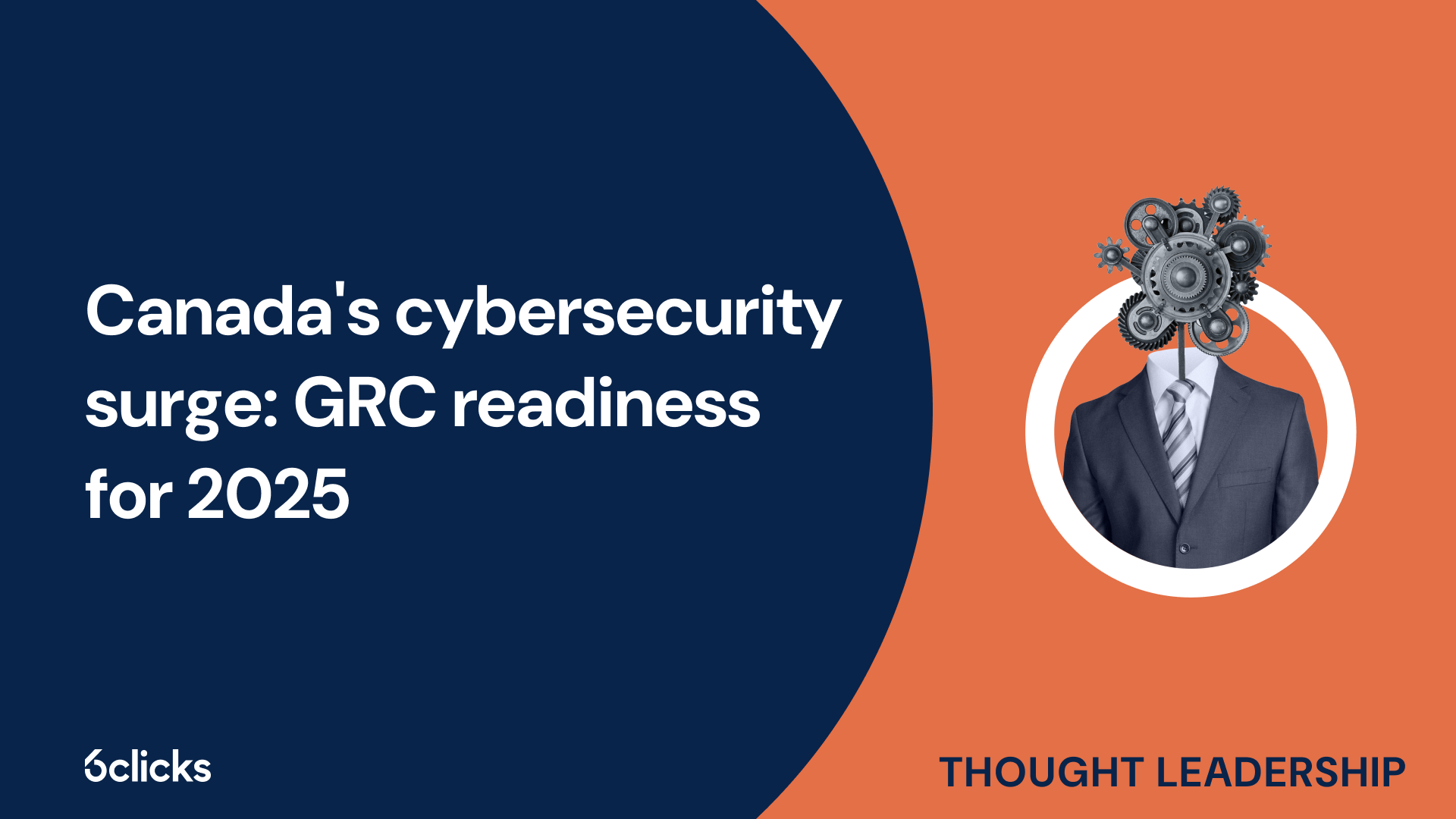Cyber resilience in 2025: Your smart guide to NIST CSF
Boost your organization's cyber resilience with this expert guide to the NIST Cybersecurity Framework. Learn to assess risk, improve security posture, and automate compliance with AI-powered tools.
-1.png?width=200&height=249&name=Group%20193%20(1)-1.png)
Cyber resilience in 2025: Your smart guide to NIST CSF
What is NIST 800-171?
NIST (National Institute of Standards and Technology) 800-171 refers to a set of guidelines and requirements established by the U.S. government for the protection of Controlled Unclassified Information (CUI). These guidelines apply to organizations that handle CUI, such as government contractors and subcontractors. NIST 800-171 outlines specific security controls that must be implemented to safeguard CUI and prevent unauthorized access. These controls cover various aspects of security, including access control, incident response, risk assessment, and more. Compliance with NIST 800-171 is necessary for organizations to ensure the confidentiality, integrity, and availability of CUI. Failure to meet these requirements can lead to significant consequences, including reputation damage, legal repercussions, and loss of business opportunities. Therefore, organizations are advised to familiarize themselves with the guidelines and implement the necessary security measures to achieve compliance.
What is MFA?
Multi-Factor Authentication (MFA) is an essential security measure that enhances authentication security by requiring users to provide multiple forms of verification to access their accounts or systems. In the context of Windows Hello for Business, MFA adds an extra layer of security to the authentication process.
With MFA, users need to provide additional factors in addition to their passwords to unlock their workstations. These factors can include PINs, biometrics (such as fingerprints or facial recognition), or trusted signals from devices like smartphones or security tokens.
To configure MFA Unlock using the Windows Local Group Policy Object, follow these steps:
- Open the Group Policy Management Editor.
- Navigate to Computer Configuration > Administrative Templates > Windows Components > Windows Hello for Business > User Settings.
- Enable the "Use biometrics" and "Use password protection" settings.
- Enable the "Configure the device unlock factors" setting and select the desired factors to make available for unlocking workstations.
By enabling MFA using these steps, organizations can ensure a higher level of security, reducing the risk of unauthorized access to sensitive information or systems. Embracing MFA and implementing strong authentication factors like PINs, biometrics, and trusted signals is a comprehensive approach to meeting compliance requirements, such as NIST 800-171, and improving the overall security posture of an organization.
Does NIST 800-171 require MFA?
NIST 800-171 is a set of security requirements established by the National Institute of Standards and Technology (NIST) to protect Controlled Unclassified Information (CUI) in non-federal systems and organizations. One important aspect of securing CUI is enforcing multi-factor authentication (MFA) to add an extra layer of security beyond passwords. MFA requires users to provide additional factors such as biometrics, PINs, or trusted device signals to authenticate and gain access to sensitive information. Implementing MFA helps to significantly reduce the risk of unauthorized access and enhance compliance with NIST 800-171 requirements. In this article, we will explore whether NIST 800-171 mandates the use of MFA and the steps organizations can take to ensure compliance.
The role of multi-factor authentication
Multi-factor authentication (MFA) plays a crucial role in meeting the security requirements outlined in NIST 800-171. It provides an additional layer of security to protect sensitive systems and data, especially for small businesses that need to comply with the Cybersecurity Maturity Model Certification (CMMC) and handle Controlled Unclassified Information (CUI).
MFA is essential in preventing unauthorized access to organizational systems by requiring users to provide multiple authentication factors. This helps verify the user's identity and ensures that only authorized individuals can access sensitive information.
NIST 800-171 control 3.5.3 specifically requires MFA for both privileged and non-privileged accounts. This means that all users, regardless of their access level, must go through the MFA process to gain access to the system or data. By implementing MFA, small businesses can significantly enhance their security posture and reduce the risk of data breaches or unauthorized access to CUI.
What does NIST 800-171 say about MFA?
According to NIST 800-171, multi-factor authentication (MFA) plays a crucial role in enhancing network access security and protecting controlled unclassified information (CUI). This comprehensive approach requires users to provide multiple authentication factors, ensuring the verification of their identity and minimizing the risk of unauthorized access.
Specific requirements for MFA implementation in relation to network access and privileged accounts are outlined in NIST 800-171 control 3.5.3. This control mandates that MFA be implemented for both privileged and non-privileged accounts. All users, regardless of their access level, must go through the MFA process to gain access to the system or CUI.
Implementing MFA brings numerous benefits. Firstly, it adds an extra layer of security to safeguard sensitive information. By requiring multiple authentication factors, it greatly reduces the risk of unauthorized access and data breaches. Secondly, MFA enhances network access security by ensuring that only authorized individuals can gain entry. This significantly strengthens the organization's security posture, especially when handling CUI, which is potentially sensitive information.
To implement a multi-factor authentication solution, organizations can utilize a combination of authentication mechanisms such as passwords, security tokens, biometrics, or smart cards. It is crucial to choose the appropriate MFA solution that aligns with the organization's security policies and risk profile.
Other important security controls in NIST 800-171
In addition to the requirement for multi-factor authentication (MFA) outlined in NIST 800-171 control 3.5.3, there are several other important security controls outlined in the document that are crucial for ensuring the security of network access, privileged accounts, and nonprivileged accounts.
One key security control is the implementation of strong security policies and procedures. NIST 800-171 provides guidelines for the development and enforcement of security policies that govern user access, account management, and data handling. These policies should outline the organization's approach to network access and specify the requirements for privileged and nonprivileged accounts.
Another critical security control is the continuous monitoring and assessment of security controls. This involves regularly reviewing and evaluating the effectiveness of the implemented security measures, identifying any vulnerabilities or weaknesses, and taking corrective actions to address them. This ensures that the organization's network access, privileged accounts, and nonprivileged accounts remain secure and protected from potential threats.
Furthermore, NIST 800-171 emphasizes the importance of a comprehensive approach to security. This includes implementing a layered defense strategy that includes not only MFA but also other security controls such as encryption, intrusion detection and prevention systems, access controls, and security awareness training. These measures work together to create a robust security posture and mitigate the risk of unauthorized access and data breaches.
Understanding the benefits of multi factor authentication
Multi-factor authentication (MFA) is an essential security measure that provides an additional layer of protection for accessing sensitive information and systems. With the increasing sophistication of cyber threats, relying solely on passwords or usernames is no longer enough to secure organizational systems. MFA requires users to provide multiple pieces of evidence to verify their identity, significantly reducing the risk of unauthorized access. By understanding the benefits of MFA, organizations can better comprehend its importance in compliance with regulations like NIST 800-171 and develop a robust security posture. This article will delve into the advantages of multi-factor authentication and highlight how it enhances network access, strengthens compliance requirements, and mitigates the risk of unauthorized access and data breaches.
Increased network access security
Increased network access security is of paramount importance in relation to NIST 800-171 compliance. NIST 800-171 is a set of guidelines developed by the National Institute of Standards and Technology (NIST) to protect Controlled Unclassified Information (CUI) from unauthorized access.
To enhance network security and meet the compliance requirements of NIST 800-171, organizations need to implement multi-factor authentication (MFA). MFA adds an additional layer of security by requiring users to provide multiple forms of verification before granting them access to sensitive information.
By implementing MFA, organizations can significantly reduce the risk of unauthorized access to their networks and systems. MFA requires users to provide multiple authentication factors, such as something they know (password), something they have (smart card), or something they are (biometrics).
MFA plays a crucial role in preventing unauthorized access and protecting sensitive information. It adds an extra level of security beyond traditional password-based authentication methods. Even if an attacker manages to obtain a user's password, they would still need the second authentication factor to gain access to the network.
Controlled unclassified information protection
To ensure the safety of controlled unclassified information (CUI), organizations must implement robust protection measures. UserLock, a comprehensive access security solution, offers features that directly address the high-priority security requirements outlined in NIST 800-171.
Access control is a critical element in protecting CUI, and UserLock excels in this area. It provides granular control over who can access CUI and under what circumstances. Organizations can enforce restrictions based on criteria such as time, location, and device, ensuring that only authorized individuals can access sensitive information.
Audit and accountability are also essential components of CUI protection, and UserLock delivers on this front. It maintains detailed logs of user activity, allowing organizations to monitor and analyze access attempts effectively. In the event of a security incident, these audit logs provide valuable information for investigation and remediation.
Identification and authentication are key requirements to prevent unauthorized access to CUI, and UserLock offers robust capabilities in this regard. It supports multi-factor authentication (MFA), requiring users to provide additional verification factors beyond passwords. This extra layer of security significantly reduces the risk of unauthorized access to CUI.
By utilizing UserLock's access control, audit and accountability, and identification and authentication features, organizations can bolster their controlled unclassified information protection efforts and meet the stringent requirements outlined in NIST 800-171.
Improved authentication factors
Improved authentication factors are a critical aspect of the NIST 800-171 compliance requirements. These factors enhance the overall security of the authentication process by requiring multiple forms of verification from individuals attempting to access controlled unclassified information (CUI).
NIST 800-171 emphasizes the use of three primary types of authentication factors: something you know, something you have, and something you are.
The factor of "something you know" typically involves using a secret piece of information that the user possesses, such as a PIN or a password. This factor ensures that individuals accessing CUI have the knowledge necessary to authenticate their identity.
The factor of "something you have" involves the possession of a physical object or device that can be used for verification. This may include cryptographic identification devices or tokens that generate temporary codes. By requiring possession of such items, NIST 800-171 adds an extra layer of security to the authentication process.
Finally, the factor of "something you are" refers to biometric factors, such as fingerprints or facial recognition. These unique biological characteristics provide a high level of certainty regarding an individual's identity and significantly reduce the risk of unauthorized access.
By combining these improved authentication factors, NIST 800-171 ensures a stronger and more robust authentication process. The use of multiple factors increases the complexity of authentication and makes it significantly more challenging for malicious actors to gain unauthorized access to CUI. Organizations that implement these factors in their authentication mechanisms demonstrate a comprehensive approach to security and meet the compliance requirements set forth by NIST 800-171.
Enhanced authentication mechanisms
Enhanced authentication mechanisms play a crucial role in meeting the requirements of NIST 800-171 for securing Controlled Unclassified Information (CUI). These mechanisms go beyond traditional username and password combinations to provide a higher level of security. By implementing these mechanisms, organizations can ensure the integrity of their data and protect against unauthorized access.
One widely used enhanced authentication method is biometrics. Biometric authentication uses unique biological characteristics such as fingerprints, facial recognition, or iris scans to verify an individual's identity. These physiological traits are difficult to forge or replicate, providing a robust layer of security that greatly reduces the risk of unauthorized access.
Another effective authentication method is the use of cryptographic identification devices or tokens. These devices generate temporary codes that are used for authentication. By requiring possession of the physical device, NIST 800-171 ensures that only authorized individuals can access CUI. This adds an extra layer of security as the device acts as something the individual "has".
Utilizing these enhanced authentication mechanisms is of utmost importance for organizations handling CUI. These mechanisms ensure that only authorized individuals can access sensitive information, reducing the risk of data breaches and unauthorized access. By incorporating biometrics, cryptographic identification devices, and tokens into their security protocols, organizations can align with NIST 800-171 requirements and implement a comprehensive and robust approach to protecting their data.
Implementing a multi factor authentication solution
Implementing a multi-factor authentication (MFA) solution is crucial for organizations seeking to enhance their network security and comply with various regulations, such as NIST 800-171. MFA involves the use of multiple authentication factors, which can include something the individual knows (such as a password), something they have (such as a cryptographic identification device), or something they are (such as biometric data). By requiring the use of multiple factors, MFA significantly reduces the risk of unauthorized access and helps protect sensitive information, such as controlled unclassified information (CUI). NIST 800-171 mandates the implementation of MFA as part of its comprehensive approach to safeguarding CUI, ensuring that only authorized individuals can gain access to organizational systems and resources. By leveraging MFA, organizations can enhance their security posture, mitigate the threat of malicious actors, and meet compliance requirements in a proactive and effective manner. Additionally, MFA offers the potential for improved operational efficiency and a reduced risk profile, making it an essential component of a robust security strategy.
Identifying your organization's security requirements
Identifying your organization's security requirements for NIST 800-171 compliance involves several key steps.
Firstly, conducting a thorough assessment of your organization's assets is crucial. This includes identifying all the information systems, data, and resources that need protection. By understanding what assets you have, you can prioritize your security efforts and allocate resources effectively.
Secondly, it is important to identify potential threats and vulnerabilities. Threats can come from both external and internal sources, such as hackers, malicious actors, or employees with malicious intent. Vulnerabilities can include outdated software, weak passwords, or lack of proper access controls. By identifying these threats and vulnerabilities, you can develop strategies to mitigate them and enhance your organization's security posture.
Next, determining the impact of a security breach is essential. This involves assessing the potential consequences of a security incident, such as financial losses, reputational damage, or legal penalties. By understanding the potential impact, you can prioritize your security measures accordingly.
Additionally, categorizing your information systems is a crucial step. This involves classifying your systems based on their sensitivity and criticality. By categorizing your systems, you can identify the appropriate security controls required to protect them.
Lastly, conducting a risk assessment is vital. This involves evaluating the potential risks associated with each information system and identifying the likelihood and potential impact of these risks. The findings from the risk assessment will help guide your organization in implementing the necessary security controls to comply with NIST 800-171.
Building an appropriate layer of security
Building an appropriate layer of security for mobile devices is crucial in today's digital landscape, where threats to data and privacy are constant. Mobile threat defense (MTD) can play a significant role in supplementing Mobile Device Management (MDM) and Mobile Application Management (MAM) tools to enhance the security posture of mobile devices.
MTD provides real-time continuous monitoring of mobile devices, offering proactive protection against a wide range of threats. This monitoring includes identifying and assessing potential risks, such as malware, suspicious network connections, and unauthorized access attempts. By continuously scanning and analyzing device activity, MTD can detect any anomalies or unusual behavior, enabling immediate action to mitigate threats.
Another important feature of MTD is its ability to assess mobile applications for potential security risks. It analyzes the behavior of installed apps, ensuring they do not pose a threat to the device or the organization's data. MTD can identify and block applications that may have malicious intent or contain vulnerabilities that could be exploited.
MTD also protects against wireless network attacks, such as Man-in-the-Middle (MitM) attacks or rogue Wi-Fi access points. It monitors network connections and enforces secure connections, preventing data interception or unauthorized access.
Furthermore, MTD alerts users to unexpected app interactions or permissions that may compromise their privacy or security. By notifying users of potentially risky app behaviors, MTD empowers them to make informed decisions about app usage and permissions.
By combining MTD with MDM and MAM tools, organizations can establish a comprehensive and layered security approach for their mobile devices. This approach addresses the unique security challenges that arise in an increasingly mobile-centric environment, ensuring the protection of sensitive data and maintaining organizational security standards.
Establishing appropriate security policies and procedures
Establishing appropriate security policies and procedures is essential for organizations seeking to achieve CMMC compliance in relation to multi-factor authentication (MFA). MFA provides an additional layer of security by requiring users to provide multiple forms of authentication before accessing sensitive systems or data. While MFA is crucial for mitigating the risks associated with unauthorized access, it is important to consider the unique risks and vulnerabilities posed by MFA-based attacks.
To address these risks, organizations should augment their existing security controls with mobile threat defense (MTD) solutions. MTD is specifically designed to monitor and protect mobile devices, which are often used in MFA processes. MTD provides real-time continuous monitoring, identifying and assessing potential risks such as malware and suspicious network connections. By scanning device activity and analyzing behavior, MTD can detect and mitigate threats before they can compromise the security of MFA.
While mobile device management (MDM) and mobile application management (MAM) tools play a crucial role in device and app management, they do not fully address the specific attack vectors associated with MFA. MTD provides an additional layer of protection by monitoring wireless network connections and alerting users to potential risks, such as unexpected app interactions or permissions that may compromise security.







